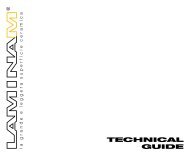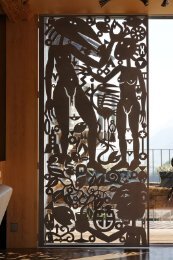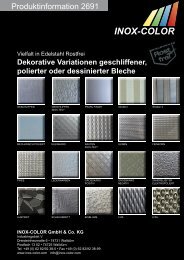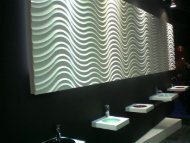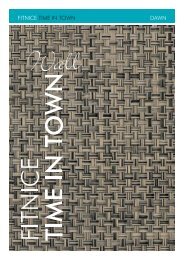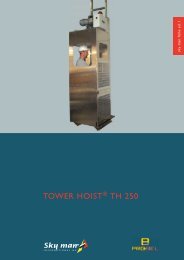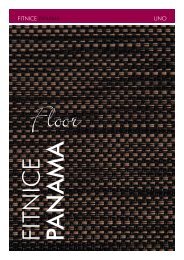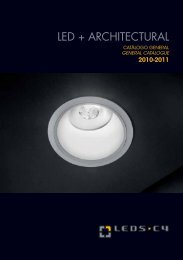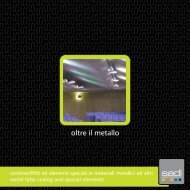Kundeninformation INOX-SPECTRAL-Verfahren-englisch ... - DieMMe
Kundeninformation INOX-SPECTRAL-Verfahren-englisch ... - DieMMe
Kundeninformation INOX-SPECTRAL-Verfahren-englisch ... - DieMMe
You also want an ePaper? Increase the reach of your titles
YUMPU automatically turns print PDFs into web optimized ePapers that Google loves.
2. Resistance<br />
2.1. Corrosion resistance<br />
The corrosion resistance of the coloured surface basically depends on the corrosion resis-<br />
tance of the stainless steel itself. In view of corrosion resistance the chromium oxide layer<br />
applied by the <strong>INOX</strong>-<strong>SPECTRAL</strong>®-Process chemically strengthens the passive layer of<br />
the stainless steel. Therefore coloured stainless steel normally shows a higher resistance<br />
against corrosion than the uncoloured material. If the stainless steel itself is not durable<br />
against corrosion attack, corrosion will also occur on the coloured surface in a retarded and<br />
reduced manner. Therefore the quality of the material to be coloured has to be selected<br />
according to the corrosive environment to be expected.<br />
2.2. Temperature resistance<br />
The temperature resistance of coloured stainless steel depends mainly on the ac-<br />
tual alloy. Coloured stainless steel will withstand long-time heat-exposure up to 200<br />
degree. Normally short times of higher temperature up to 300 degree are not detri-<br />
mental. If the higher temperature lasts for longer time oxidation will cause a growing<br />
thickness of the oxide layer which produces discoloration. New tests with black co-<br />
loured low chromium-grade stainless steel (type 409) demonstrated a temperature<br />
resistance up to 400 degree and more. Very high temperature caused by welding or<br />
soldering will destroy the coloured surface.<br />
2.3. Resistance of light, weather and ageing<br />
The surface of coloured stainless steel does not contain pigments or colouring substances<br />
which could be bleached or changed by ageing or infl uences of light and weather. Long-<br />
time exhibition to different atmospheric conditions during 25 years have shown no visible<br />
changes on coloured stainless steel. The surface of coloured stainless steel does not crack<br />
or peel and is resistance to ageing.<br />
2.4. Mechanical resistance<br />
The fi lm of chromium which creates the colours is very ductile and homogeneously connec-<br />
ted with the stainless steel. Deformations which do not affect the basic material also will not<br />
impair the coloured surface. Bending, tilting, pressing and even deep-drawing can be done<br />
without affecting the colour and without cracking or peeling of the coloured surface. The resistance<br />
against mechanical wear is limited due to the extremely low thickness of the inter-<br />
ference layer which lies between 0.05 and 0.3μm. Its hardness is somewhat higher than the<br />
hardness of the uncoloured surface. Abrasive wear which affects the uncoloured stainless<br />
steel surface will also destroy the coloured surface. For the application of coloured stainless<br />
steel in areas with high abrasive wear special surfaces have been developed using dessi-<br />
nated or patterned surfaces, the surfaces of which are mechanically ground after colouring.<br />
The abrasive wear then only affects the blank protruding areas, whilst the coloured surface<br />
in the recessed areas is protected against mechanical wear.



